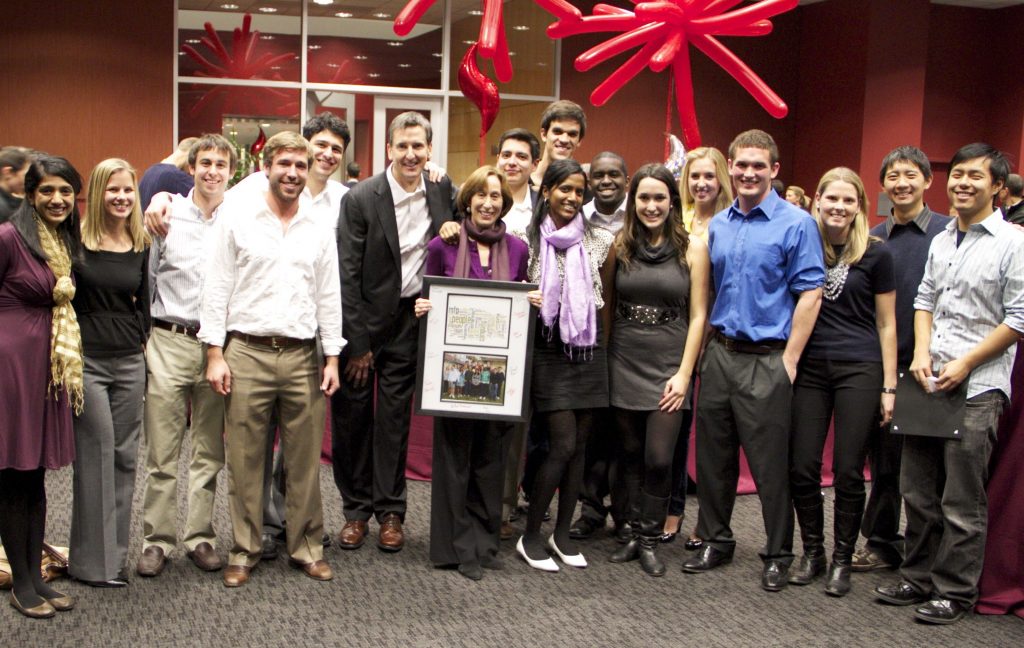
Mayfield Fellows Program Changes Lives

“Out of all the classes I took at Stanford, none has influenced my career to a greater and more positive degree.” – Albert Hsu
This is how Albert Hsu feels about his experience in the Mayfield Fellows Program, in which he participated in 2005. Offered through the Stanford Technology Ventures Program, the Mayfield Fellows Program (MFP) is a nine-month, life-changing entrepreneurship journey that takes its participants through a rich combination of intense study and real-world technology venture experience.
For 2011, the program is currently accepting applications from Stanford juniors, seniors, and co-terminal students. On average, the competitive program accepts only 12 students each year; and with applications due by noon on February 4, interested applicants have just a few more weeks to apply. MFP information sessions will be held at STVP’s offices in the Huang Engineering Center on January 20 and 26, from 5:30 to 7:00 p.m.
Learn more about MFP student eligibility requirements.
MFP was founded at Stanford University in 1996, to provide students with exposure to entrepreneurial leadership in the high-technology sector. MFP is taught by STVP Co-Director Dr. Tom Byers and STVP Executive Director Dr. Tina Seelig. According to Seelig, the program impacts students’ lives well beyond the nine-month session. “The students who come through MFP develop innovative ways of seeing problems as real opportunities, a skill they can use to their benefit for the rest of their lives.”
[quote_right]”I learned that being innovative and entrepreneurial doesn’t necessarily mean starting your own company. It is a state of mind and a framework for solving problems.”
— Sandy Yu, MFP alum[/quote_right]During the spring quarter, Mayfield Fellows study entrepreneurship issues related to the areas of people, products, and resources. As most of the issues examined in the spring overlap more than one of these areas, this period of research highlights the engaging and complex decisions faced by technology entrepreneurs. With guidance from professors and industry professionals, MFP students also investigate business models and case studies to discover examples of both success and missteps by startup organizations.
During the summer quarter, students take a paid internship at one of a number of emerging companies in Silicon Valley. Over the years, Mayfield Fellows have been placed at a variety of firms, such as Facebook, Google, Plaxo, IDEO, Atheros, and Hara. Beyond working at a company that might go on to change the world, Mayfield Fellows gain access to mentorship from many of the visionary leaders and thinkers who start, and work at, these firms.
In fact, sometimes the relationship is so positive, students end up finding a home to start their careers. Alex Liu, a 2001 Mayfield Fellow, is a perfect example, having stayed with Atheros for the 10 years since his Mayfield placement. “Without MFP, I never would have had the platform of visibility, confidence, and scope that allowed me to start these projects. I am immensely grateful to MFP for my present success and satisfaction in work and life,” says Liu.
In the fall quarter, students return to Stanford to reflect on their experiences and share what they have learned with the other Mayfield Fellows. The students compare what they experienced during summer against the models and concepts they evaluated during the previous spring. As many unexpected events can occur during the summer job placements (product launches, IPOs, mergers), the fall quarter is also a time for students to appreciate that the paths of entrepreneurial leaders will not always follow a pre-determined plan, and are often altered by new challenges requiring a willingness to take risks.
With each subsequent year of the MFP, Dr. Byers continues to be impressed with each group of fellows. “Every spring, we are fortunate to begin with 12 exceptional Stanford students, who possess intelligence and poise. And over the course of the program, I am continually impressed by their growth and insights.”
 In December, the 2010 class of Mayfield Fellows took part in a graduation ceremony at Stanford’s Huang Engineering Center. Surrounded by family, friends, summer employers, and professors, each of the graduates shared insights and memories from their Mayfield Fellows experience. Each one articulated how fortunate they were to take part in the program, but each also noted the priceless connections they built with their fellow classmates. The positive camaraderie, mixed with this unique entrepreneurship experience, continues to make the Mayfield Fellows Program such an attractive opportunity for a select group of Stanford students.
In December, the 2010 class of Mayfield Fellows took part in a graduation ceremony at Stanford’s Huang Engineering Center. Surrounded by family, friends, summer employers, and professors, each of the graduates shared insights and memories from their Mayfield Fellows experience. Each one articulated how fortunate they were to take part in the program, but each also noted the priceless connections they built with their fellow classmates. The positive camaraderie, mixed with this unique entrepreneurship experience, continues to make the Mayfield Fellows Program such an attractive opportunity for a select group of Stanford students.


